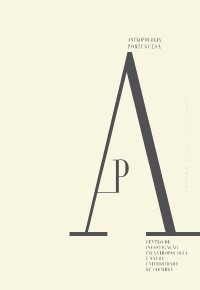Please use this identifier to cite or link to this item:
https://hdl.handle.net/10316.2/42127| Title: | Desgaste dentário na necrópole medieval de São João de Almedina (séc. XII/XVI) e a sua relação com os hábitos alimentares | Other Titles: | Dental wear in the medieval necropolis of São João de Almedina (12th-16th centuries) and its relationship with eating habits | Authors: | Carvalho, Liliana Matias de Wasterlain, Sofia N. |
Keywords: | Tooth wear;diet;past populations;Coimbra;Desgaste dentário;dieta;populações do passado;Coimbra | Issue Date: | 2016 | Publisher: | Imprensa da Universidade de Coimbra | Abstract: | The analysis of dental wear in
archaeological populations is important to
understand how past populations lived, given
that teeth do not self-remodel after their
formation. The location, severity and type of
wear may reveal information about cultural
habits and diet. This study analyses the dental
wear pattern in di erent sexes and age groups
in individuals of a medieval sample from
São João de Almedina (Coimbra, Portugal).
The sample is composed by 58 adults (28
males, 20 females and 10 individuals of
unknown sex). The methodology applied in
the recording of the interproximal and occlusal wear rates followed Hillson (2001) and Smith
(1984), respectively. The average occlusal
wear was 3.86 ± 1.59, with a predominant
exposure of dentine. The interproximal wear
rates were low (1.38 ± 0.72 and 1.3 ± 0.75).
The results were compared with data from
other populations, namely those referred
in Wasterlain (2006), which were collected
with the same methodology, in the same
geographical region, but from a population
that lived in the 19th and early 20th century.
A slight decrease in wear was noticeable in
the post-industrial age, which may be the
result of a less efficient food processing in
medieval times. O estudo do desgaste dentário em populações arqueológicas é importante para perceber como se vivia no passado, já que, uma vez erupcionados, os dentes não sofrem remodelação. A localização, severidade e tipo de desgaste pode revelar hábitos culturais e dietéticos. O objetivo deste estudo é analisar o padrão de desgaste dentário, por sexo e classe etária, nos indivíduos de uma amostra medieval de São João de Almedina (Coimbra, Portugal) de modo a melhor conhecer os seus hábitos. A amostra em estudo é composta por 58 adultos (28 homens, 20 mulheres e 10 indivíduos de sexo desconhecido). Os níveis de desgaste oclusal e aproximal foram registados com os métodos de Smith (1984) e Hillson (2001), respetivamente. Registou-se um desgaste oclusal médio de 3,86 ± 1,59, caraterizado por grande exposição da dentina. Os níveis de desgaste interproximais são baixos (1,38 ± 0,72 e 1,3 ± 0,75). Os resultados foram comparados com outras populações, nomeadamente com os dados de Wasterlain (2006), recolhidos com a mesma metodologia, numa amostra da mesma região geográfica, mas dos finais do século XIX/inícios do século XX. Notou-se uma clara atenuação do desgaste na época pós-industrial, o que pode ser resultado de um menos eficiente processamento da comida em época medieval. |
URI: | https://hdl.handle.net/10316.2/42127 | ISSN: | 0870-0990 2182-7982 (PDF) |
DOI: | 10.14195/2182-7982_32_6 | Rights: | open access |
| Appears in Collections: | Antropologia Portuguesa |
Files in This Item:
| File | Description | Size | Format | |
|---|---|---|---|---|
| desgaste_dentario_na_necropole_medieval_de_sao_joao.pdf | 1.26 MB | Adobe PDF |  |
Items in DSpace are protected by copyright, with all rights reserved, unless otherwise indicated.
